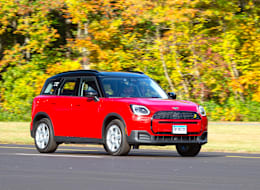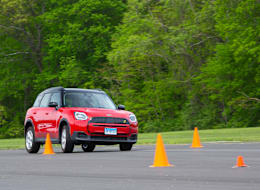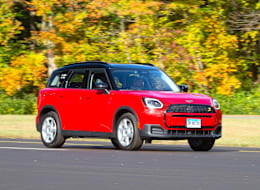Introduction
The Electric 2025 Mini Countryman SE Charms and Befuddles
The biggest Mini is better as an EV, but it shares some of the same annoying flaws as its gas-powered counterpartOverview
We have completed testing of the Mini Countryman EV. Stay tuned for the full road-test report.
We’re sharing our first impressions of this new vehicle.
The Countryman SE is the latest Mini to launch under the company’s new strategy of offering gas and electric versions of every vehicle. (The plug-in hybrid Countryman is no more.) Parked next to each other, it’s difficult to tell the difference between the gas Countryman and the electric one we’re testing, aside from the SE’s solid grille and green “S” badges on the front and rear instead of red ones. This makes us wonder why Mini didn’t just give it “SE” badges. Inside, there’s the same pared-down aesthetic and circular infotainment screen featured in every new Mini.
In fact, the two fellow Countrymen have so much in common that for the purposes of this First Drive review, we’re going to focus on what makes the SE different: It has two electric motors—one for the front wheels and one for the rear wheels—and a battery that’s good for 212 miles of driving range between charges, according to estimates from the Environmental Protection Agency.
The Countryman SE’s closest competitor is the Volvo XC40 Recharge EV, which is about the same size and about the same price. (We tested the related C40 Recharge.) Both vehicles trade heavily on style, although the XC40 has a considerably longer range. The Countryman is big and heavy for a Mini, but it is still small for the emerging class. It’s between 6 and 8 inches shorter than the Ford Mustang Mach-E, Hyundai Ioniq 5, Kia EV6, Nissan Ariya, and Volkswagen ID.4.
Mini—which is owned by BMW—builds the Countryman SE in Leipzig, Germany, so it doesn’t qualify for a federal tax credit unless you choose to lease it.
After driving the SE for a few weeks, we can confidently say that electrification makes a difference for this little SUV.


























